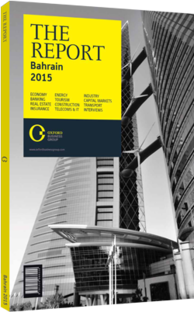Share analysis: Al Salam Bank-Bahrain – Banking
The Company
Al Salam Bank-Bahrain (ASBB) is a diversified Islamic bank engaged in commercial and investment banking and providing wealth management, retail, corporate, treasury, offshore and private banking services. Incorporated in January 2006, ASBB is regulated by the Central Bank of Bahrain under a retail banking licence. ASBB’s businesses consist of its operations in Bahrain, as well as its various subsidiaries and associates located in the UK, Saudi Arabia, Singapore and Algeria.
ASBB was listed on the Bahrain Bourse on April 27, 2006, and was subsequently listed on the Dubai Financial Market on March 26, 2008. Following the acquisition of BMI Bank, ASBB reported its authorised share capital increased to BD250m ($662.5m), while its issued and paid-up share capital rose to BD214m ($567.1m). Bank Muscat became ASBB’s largest shareholder, with a 14.74% stake, following the acquisition of its 49%-owned affiliate, BMI Bank.
Al Salam Bank has attained geographical diversification through its subsidiaries and associates. While operating mainly in Bahrain, it has representative offices in Singapore, and a 14.4% stake in Al Salam Algeria (ASBA) – an unlisted bank incorporated in the country. In 2012 ASBA was recognised as an “investment in an associate”, with the related gains included under “gains from available-for-sale investments” in ASBB’s balance sheet.
Development Strategy
ASBB has a 6% market share of total Bahraini bank loans, and a similar market share of total Bahraini bank deposits. The bank’s portfolio comprises investments across various industries. New investments and acquisitions in 2013 included an investment in an education services centre in Saudi Arabia, a joint-venture in a 142-unit mid-rise residential development project in Jeddah, Saudi Arabia and an investment in two state-of-the-art logistics properties in Australia, which are leased to one of the largest listed industrial groups in the country (with market capitalisation of nearly $1bn). The bank also entered into a partnership in an upscale residential redevelopment in Mayfair, London.
With respect to the group’s merger activities, Al Salam Bank and BMI Bank merged, with 11 ASBB shares for every 1 BMI Bank share, resulting in proceeds of BD72.9m ($193.2m). Bahraini Saudi Bank also merged with Al Salam Bank in April 2012, following their shareholders’ approval.
ASBB reported net profits of BD4.1m ($10.9m) in the third quarter of 2014; however, due to the merger with BMI Bank, a year-on-year comparison would not be meaningful. The profits in the first nine months of 2014 stood at BD12.4m ($32.9m) The bank’s ROAE stood at 5.1% for a 1.24x price-to-book ratio.
The balance sheet witnessed a 1% decline during the third quarter of 2014 due to a 2% decline in interbank activities. Total assets were up by more than 79% from end-2013, due to the merger. Lending growth reached 10% quarter-on-quarter (q-o-q), supported by 11% q-o-q growth in customer deposits.
Al Salam Bank’s balance sheet has witnessed solid growth in recent years, with its loan book growing at a 28% compound annual growth rate since 2009, while investments also continued to grow – albeit at a slower pace. Assets stood at 6x equity, making the bank moderately leveraged.
ASBB’s asset quality saw improvement in 2013, with non-performing loans (NPL) dropping by 44% after witnessing a significant increase in 2012. Nevertheless, the bank continues to have high real estate exposure, with nearly 27% of the balance sheet skewed toward this sector. Indeed, the bank increased its real estate exposure by 35% y-o-y in 2013. Higher exposure to the sector subjects ASBB’s balance sheet to the risk of higher NPL formation and further deterioration of asset quality.
The group’s capital adequacy ratios were in good standing at the end of 2013, at 21.4% as of December 31, which was an improvement from 2012 levels, at 20.9%, with both well above the 12% minimum.
You have reached the limit of premium articles you can view for free.
Choose from the options below to purchase print or digital editions of our Reports. You can also purchase a website subscription giving you unlimited access to all of our Reports online for 12 months.
If you have already purchased this Report or have a website subscription, please login to continue.

